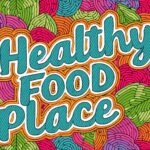Plastic has become an integral part of modern life. Its versatility, durability, and low cost make it ubiquitous in various applications, from packaging to construction. However, this convenience comes at a tremendous cost to our environment and health. Plastic is the silent killer of all living things, wreaking havoc on ecosystems and posing severe threats to human health. Here’s why plastic is a peril we can no longer ignore.
The Ubiquity of Plastic
Plastics are synthetic materials made from polymers. They are incredibly versatile and used in a wide range of products, such as:
- Packaging: Bottles, bags, wrappers, and containers.
- Consumer Goods: Toys, electronics, clothing, and household items.
- Medical Supplies: Syringes, IV bags, and surgical gloves.
- Construction Materials: Pipes, insulation, and flooring.
Environmental Impact
- Pollution: Plastic pollution is a global crisis. Every year, millions of tons of plastic waste end up in landfills, rivers, and oceans. This waste can take hundreds to thousands of years to decompose, leaching harmful chemicals into the soil and water.
- Marine Life: Oceans are particularly affected by plastic pollution. Marine animals, including fish, birds, and mammals, often mistake plastic debris for food, leading to ingestion, entanglement, and death. Microplastics, tiny fragments of broken-down plastic, are now found in virtually every marine organism.
- Ecosystems: Plastic disrupts ecosystems by altering habitats and affecting the food chain. When animals ingest plastic, it can cause physical harm, blockages, and malnutrition. The toxins from plastics can accumulate in the bodies of animals, moving up the food chain and affecting predators, including humans.
Human Health Risks
- Chemical Exposure: Plastics contain harmful chemicals such as bisphenol A (BPA), phthalates, and dioxins. These chemicals can leach into food and beverages from plastic containers, posing serious health risks. They are known endocrine disruptors, which can interfere with hormonal functions and lead to reproductive issues, developmental problems, and cancer.
- Microplastics: Microplastics have been found in the air we breathe, the water we drink, and the food we eat. These tiny particles can enter the human body, potentially causing inflammation, oxidative stress, and other health problems.
- Bioaccumulation: The toxins from plastics can accumulate in the human body over time, leading to chronic health issues such as cardiovascular diseases, respiratory problems, and weakened immune systems.
The Economic Cost
Plastic pollution also has significant economic impacts. Cleaning up plastic waste is costly for governments and communities. The loss of biodiversity and the decline in fish populations affect industries such as tourism and fisheries, leading to economic instability.
Sustainable Solutions
To combat the plastic crisis, we need to adopt sustainable solutions at both individual and systemic levels:
- Reduce Plastic Use: Opt for reusable products, such as shopping bags, water bottles, and containers. Avoid single-use plastics whenever possible.
- Recycle and Reuse: Properly recycle plastic items and support products made from recycled materials. Encourage companies to use sustainable packaging.
- Support Legislation: Advocate for policies that limit plastic production, ban single-use plastics, and promote sustainable alternatives.
- Innovative Alternatives: Invest in research and development of biodegradable and eco-friendly materials that can replace traditional plastics.
Conclusion
Plastic is a silent killer that threatens the health of all living things on Earth. Its widespread use and improper disposal have led to a global crisis that affects ecosystems, wildlife, and human health. By recognizing the dangers of plastic and adopting sustainable practices, we can mitigate its impact and protect our planet for future generations. It’s time to act now, before plastic pollution becomes an irreversible catastrophe.
